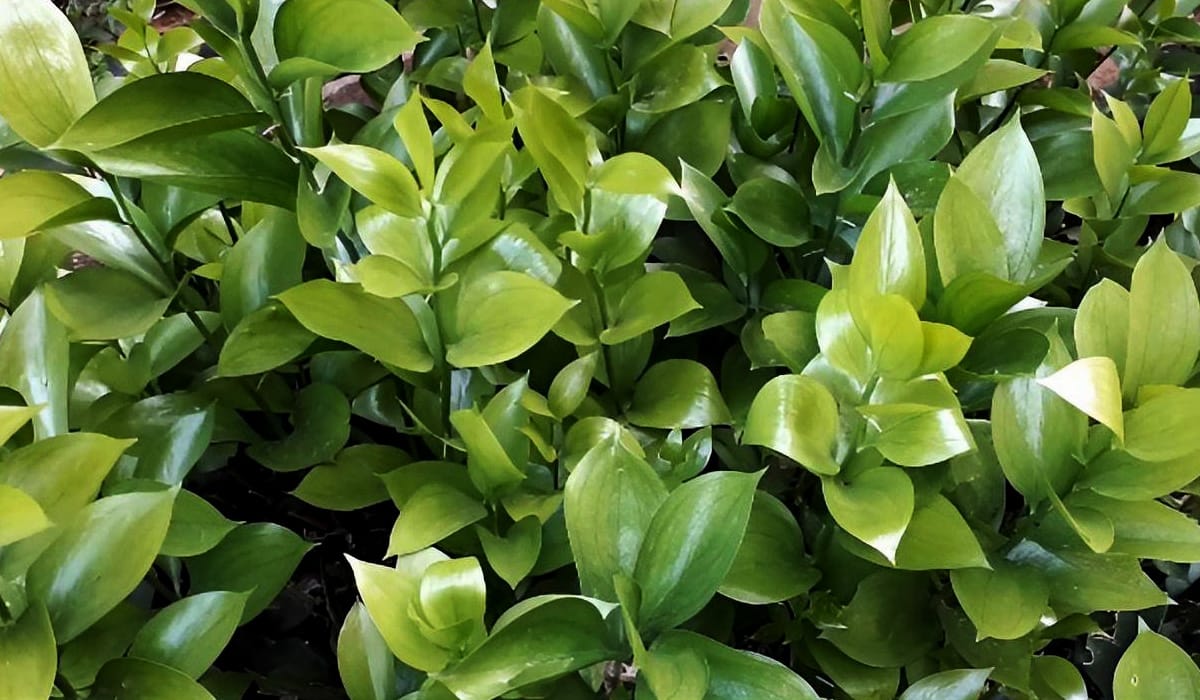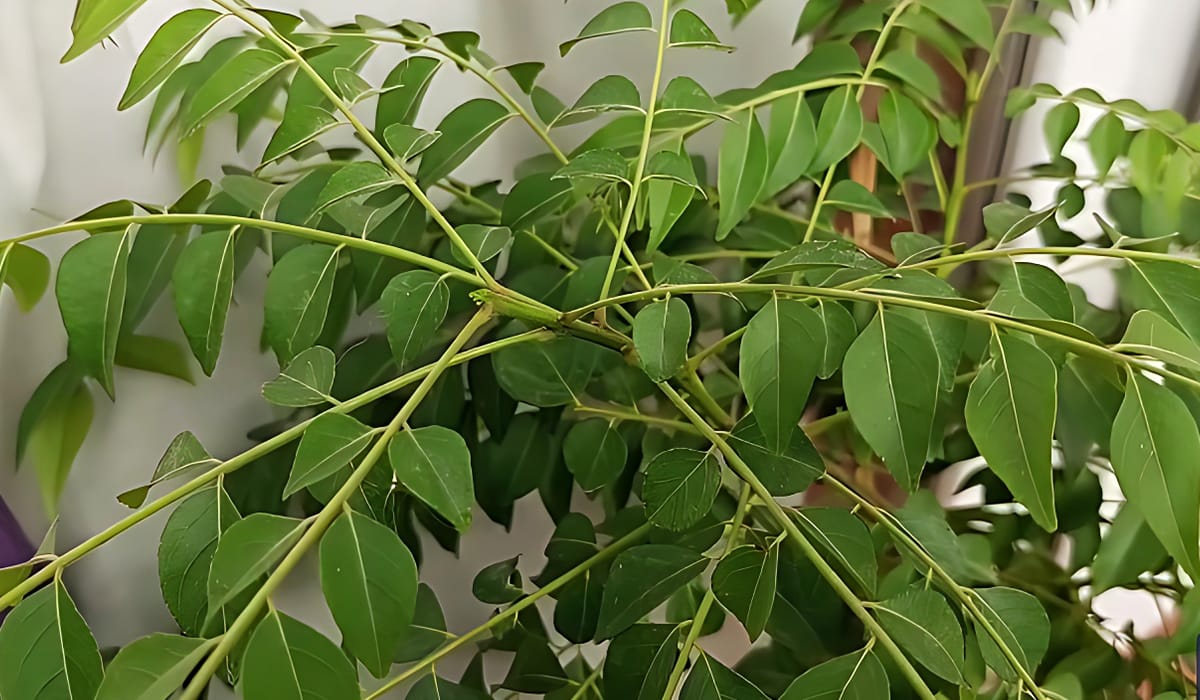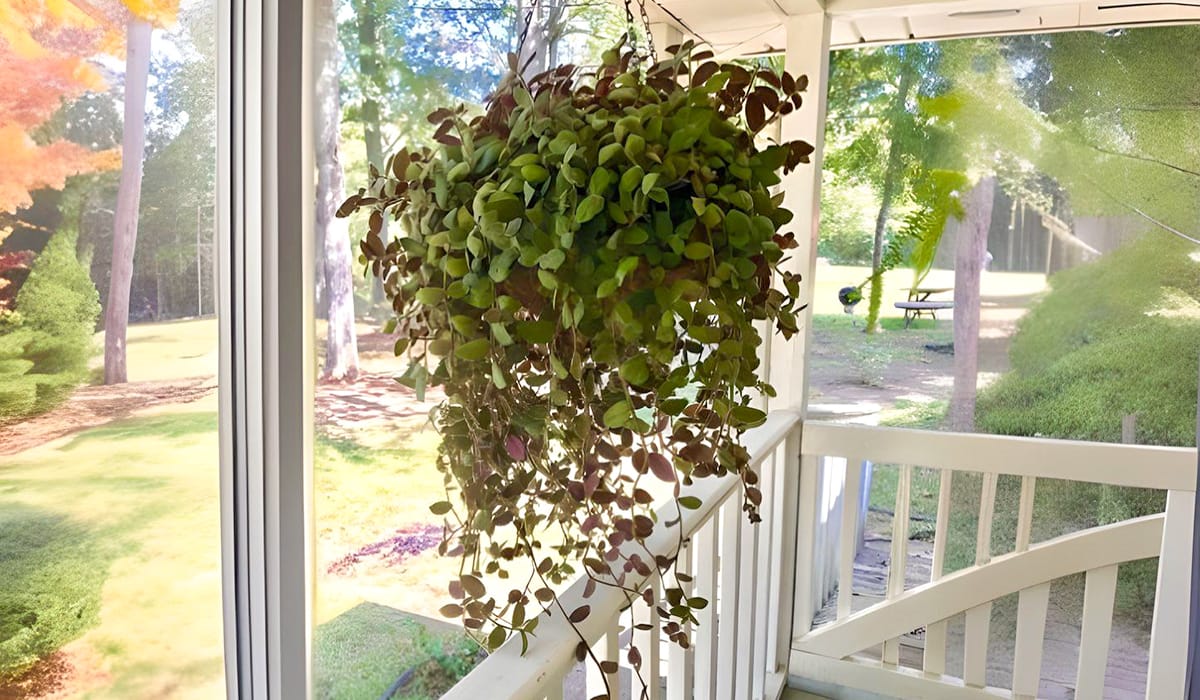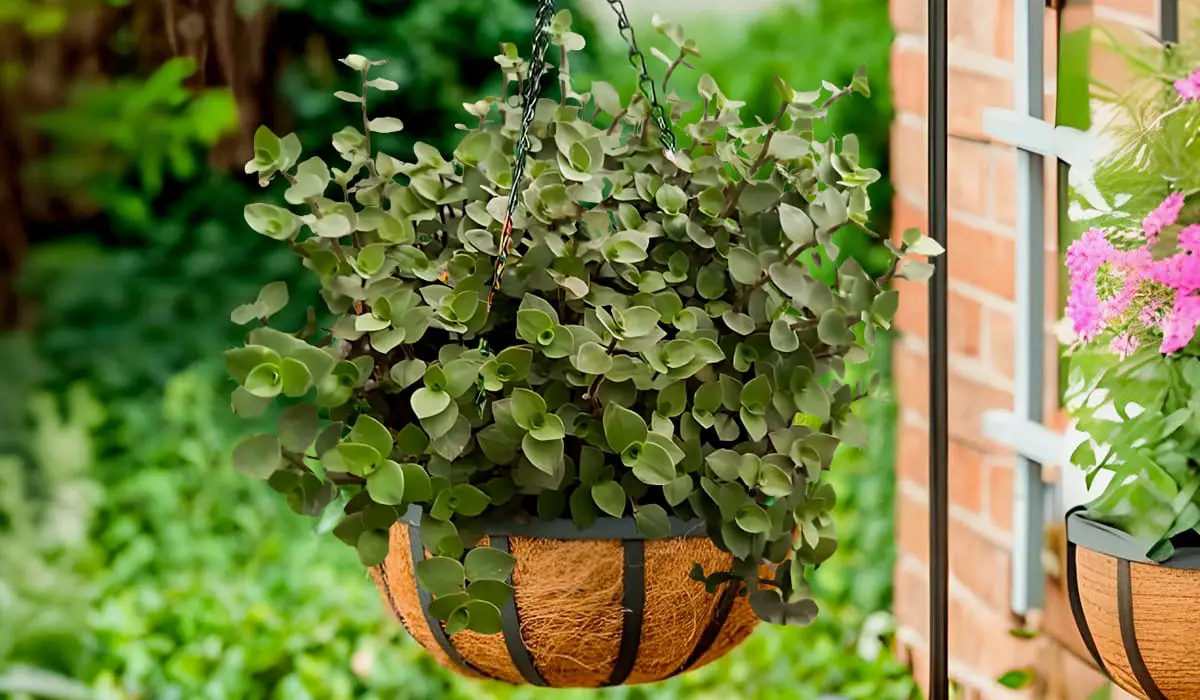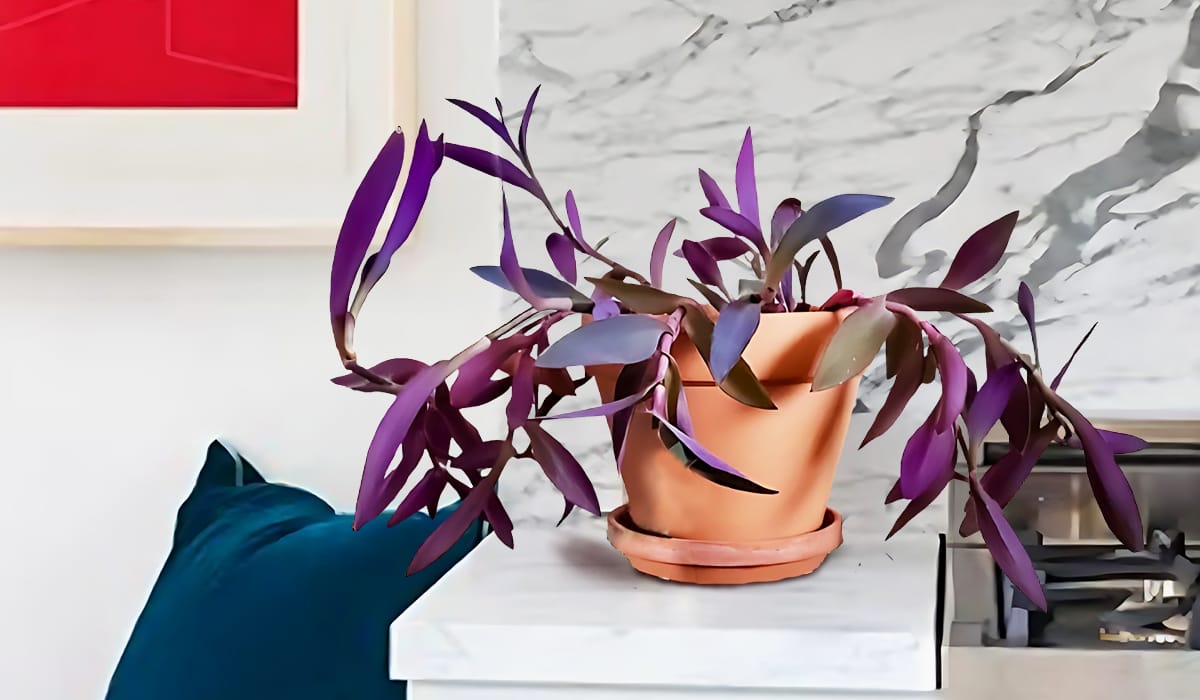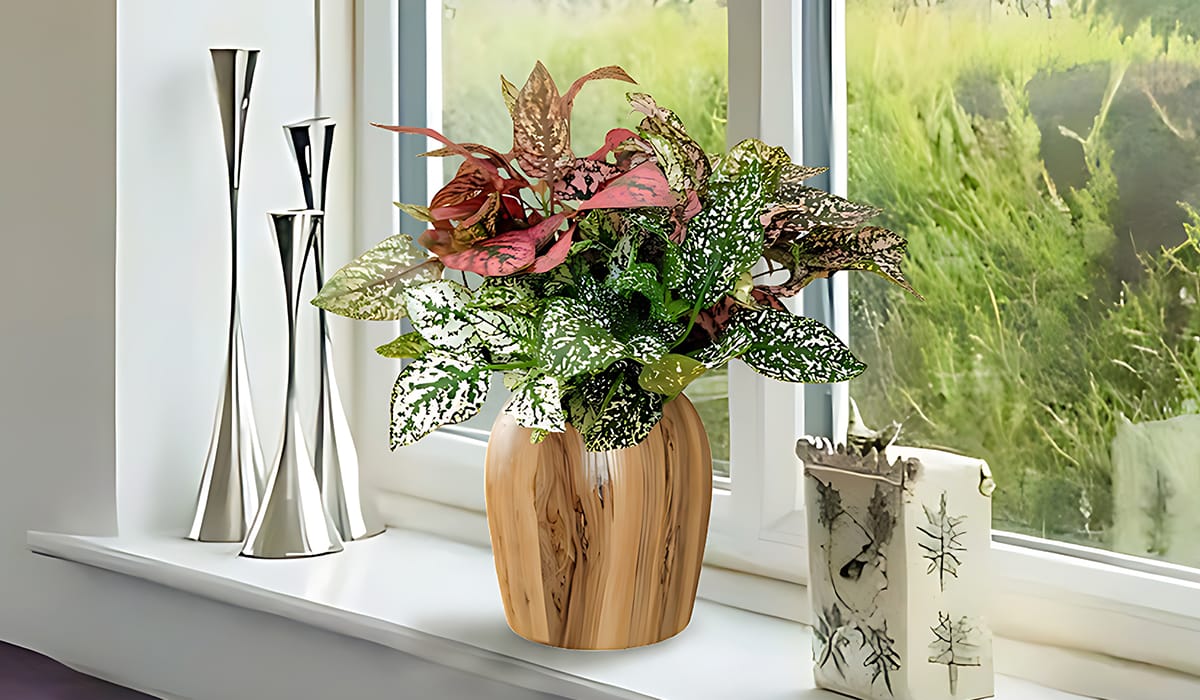The Lemon Lime Prayer Plant is a beautiful and exciting houseplant that can add color and vibrancy to your indoor garden. This guide will give you all the information you need about this plant, including its history, how to take care of it, and some tips for ensuring it thrives in your home. This comprehensive guide delves into the fascinating world of the Lemon Lime Prayer Plant, exploring its origins, care requirements, and tips for cultivating a thriving specimen in your home.
Lemon Lime Prayer Plant
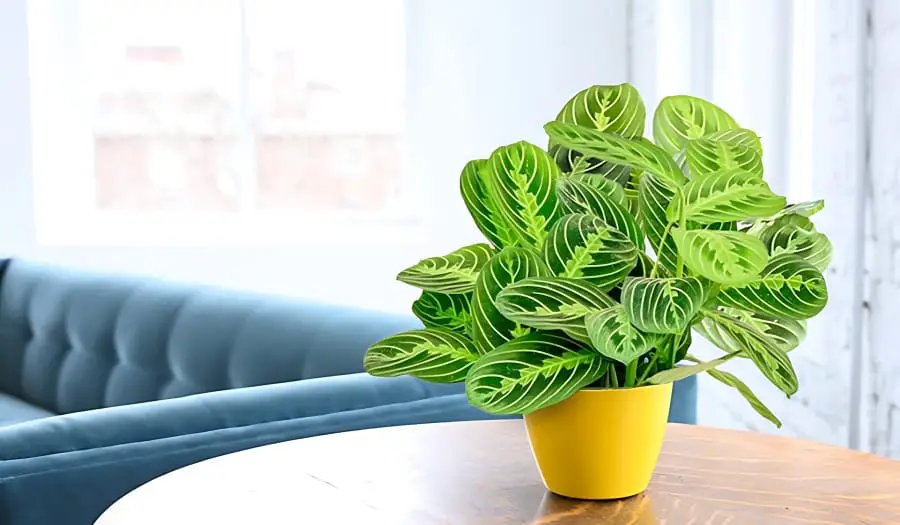
The Lemon Lime Prayer Plant, scientifically known as Maranta leuconeura, is a member of the Marantaceae family. Native to the Brazilian rainforests, this plant is renowned for its impressive foliage. The Lemon Lime Prayer Plant leaves boast a mesmerizing combination of vibrant green hues with streaks of lemon and lime, creating an eye-catching display that adds a burst of color to any room.
One of the most striking features of the Lemon Lime Prayer Plant is its intricately patterned leaves. The elliptical leaves are adorned with contrasting shades of green, resembling a work of art. The lemon and lime hues add a touch of brightness, making it a visually appealing choice for indoor plant enthusiasts.
Lemon Lime Prayer Plant Care
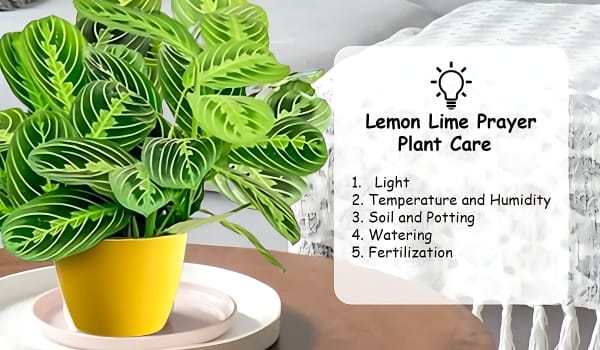
If you want to add a stunning touch of natural beauty to your indoor space, consider getting a Lemon Lime Prayer Plant (Maranta leuconeura). These plants are known for their unique characteristics and vibrant foliage and are relatively low-maintenance. However, to ensure your plant thrives, there are specific care steps you can follow. Here's an easy-to-follow guide on how to care for your Lemon Lime Prayer Plant:
- Light: Lemon Lime Prayer Plants prefer bright, indirect light. You can place them near a window with filtered sunlight, but avoid direct sunlight as it can scorch the leaves. A north or east-facing window is ideal. If your space lacks natural light, consider supplementing it with fluorescent lights.
- Temperature and Humidity: Your plant will do best in a warm and humid environment. Keep the room temperature between 65-75°F (18-24°C). To boost humidity, you can mist the leaves regularly or place a water tray near the plant. A humidifier can also be helpful if you live in a dry indoor environment.
- Soil and Potting: Using well-draining, peat-based soil will ensure proper water retention. You can refresh the soil and provide additional nutrients by repotting your Lemon Lime Prayer Plant every 1-2 years. Make sure the pot has drainage holes to prevent waterlogging.
- Watering: Keep the soil consistently moist but not soggy. Allow the top inch of soil to dry out before watering. It's best to use room-temperature water to avoid shocking the plant. Adjust the watering frequency based on the season – water more frequently in the growing season (spring and summer) and less often during the fall and winter when the plant is dormant.
- Fertilization: You can feed your Lemon Lime Prayer Plant with a balanced, water-soluble fertilizer during the growing season (spring and summer). Dilute the fertilizer to half the recommended strength and apply it every 4-6 weeks. It's best to avoid fertilizing during the dormant season.
Following these simple care tips, you can maintain a healthy and thriving Lemon Lime Prayer Plant indoors. Remember to pay attention to your plant's responsiveness to care, as it will help guide you in providing the best environment for its well-being.
Common Lemon Lime Prayer Plants Problems And Solutions
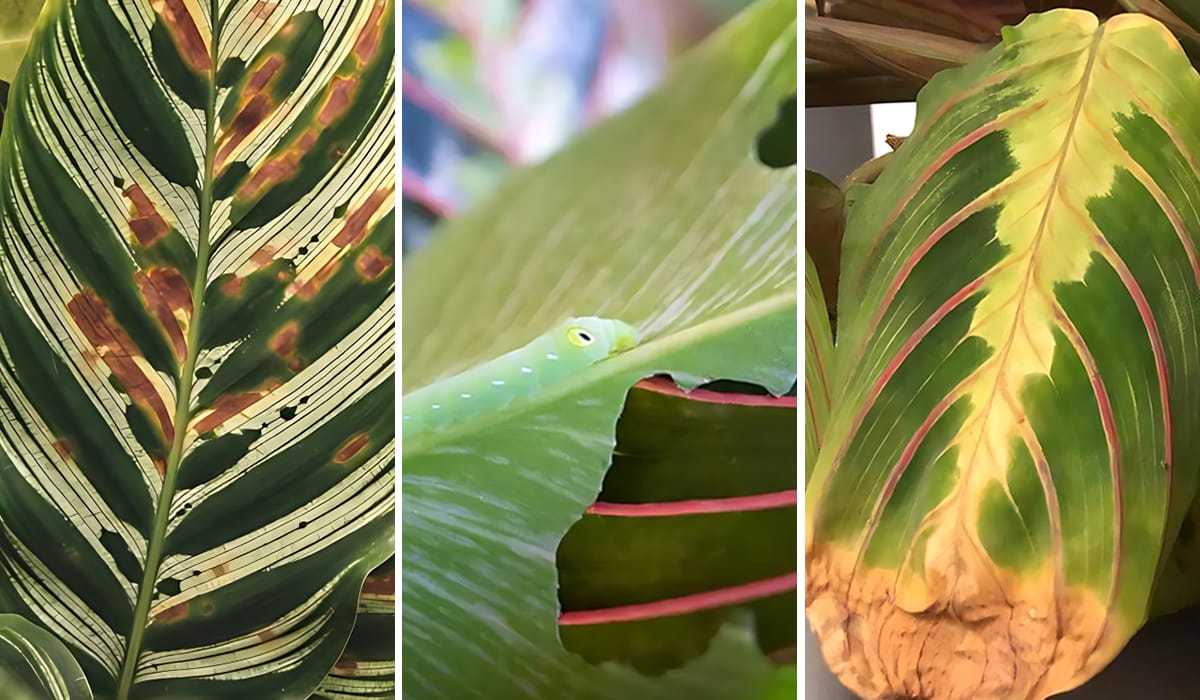
If you have a Lemon Lime Prayer Plant (Maranta leuconeura) at home, it is essential to know that while they are generally hardy, they can still face some common problems. If you notice any issues with your plant, it's best to address them immediately to keep it healthy and thriving. Here are some common problems associated with Lemon Lime Prayer Plants and their solutions:
- Problem: Brown tips on the leaves are often a sign of low humidity. The plant may be losing moisture faster than it can take it up.
Solution: To increase humidity, you can mist the leaves regularly, place a tray of water nearby, or use a humidifier. Keep the plant away from drafts, which can also contribute to leaf tip browning.
- Problem: Yellow leaves may indicate overwatering, root rot, or poor drainage.
Solution: To prevent yellowing leaves, allow the top inch of soil to dry out before watering. Ensure your pot has drainage holes to prevent waterlogging. Check the roots for signs of rot, and if you find any, trim away the affected parts and repot them in fresh soil.
- Problem: Curling or drooping leaves can result from underwatering, overwatering, or inadequate light.
Solution: Check the soil moisture – if it's too dry, water the plant thoroughly. If the soil is consistently wet, adjust your watering frequency. Ensure the plant receives the right amount of indirect light, and consider moving it to a brighter location if needed.
- Problem: Insufficient light can lead to leggy growth and sparse foliage.
Solution: Move the plant to a location with brighter, indirect light. If your Lemon Lime Prayer Plant lacks natural light, consider supplementing it with fluorescent lights.
- Problem: Common pests like spider mites or aphids may infest the plant.
Solution: Inspect the leaves regularly and remove any pests you find. Wipe them off with a damp cloth or treat the plant with neem oil or insecticidal soap. Isolate the affected plant to prevent the pests from spreading.
- Problem: Physical damage or discoloration can result from various factors, including cold drafts, direct sunlight, or chemical exposure.
Solution: Ensure the plant is protected from extreme temperatures and direct sunlight. Avoid exposing it to drafts, and be cautious with any cleaning products or fertilizers to prevent chemical damage.
- Problem: Slow growth can be attributed to insufficient light, lack of nutrients, or dormancy.
Solution: Provide adequate light, fertilize during the growing season, and be patient. The plant may naturally slow its growth during the dormant season (fall and winter).
To keep your Lemon Lime Prayer Plant healthy and thriving, monitoring it regularly and adapting your care routines accordingly is essential. Each plant is unique, so pay attention to its specific needs and adjust as needed.
wrapping up
Adding a Lemon Lime Prayer Plant to your houseplant collection offers more than just visual appeal. This remarkable plant provides an opportunity to witness the beauty of nature in motion. Meeting its specific care requirements ensures you enjoy the plant's vibrant foliage and unique characteristics. Whether you're an experienced plant enthusiast or a beginner looking to add nature to your space, the Lemon Lime Prayer Plant is an excellent choice that brings visual appeal and a sense of tranquility.
For more detailed information on Pothos Plant care,
check out our article: Prayer Plant – How To Propagation and Care at Home
Consider expanding your indoor plant collection with other easy-to-care-for plants like
- Pink Chinese Evergreen
- Fiddle Leaf Fig Tree
- Monstera Albo
- Snow Queen Pothos
- Cousin It plant
- Snow White Waffle Plant
Each of these plants offers its unique charm and benefits.
Thanks for reading this article. if you have any questions, you must comment and contact our team. don't forget to share this article with your friends.
FAQ
Where is the best place to put a Lemon Lime Prayer Plant?
Are Lemon Lime Prayer Plants rare?
What is the difference between Red Prayer Plant and Lemon Lime Prayer Plant?
Lemon Lime Prayer Plant: This variety is characterized by its vibrant green and yellow leaves. The leaves have a lemon-lime hue, with the central veins contrasting darker green.
Red Prayer Plant: In contrast, the Red Prayer Plant features dark green leaves with prominent red veins, giving it a more dramatic and reddish appearance compared to the Lemon Lime variety.
Both varieties belong to the Maranta leuconeura species and share similar care requirements, preferring indirect light, high humidity, and well-draining soil. Choosing between them may depend on personal aesthetic preferences and the specific ambiance you want to create in your living space.

